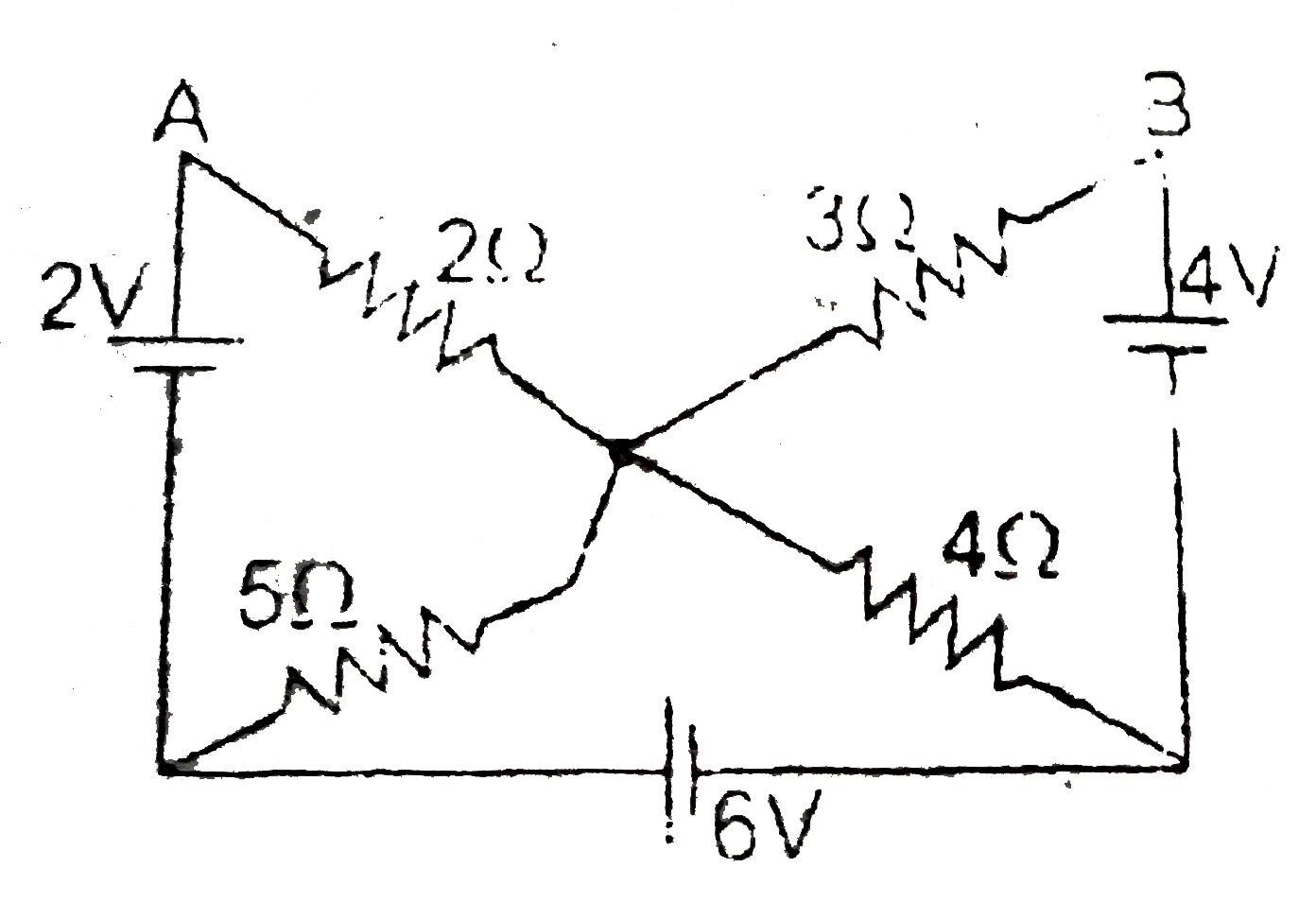Work done by a conservative force in bringing a body from infinity to A is 60 J and to B is 20J. What is the difference in potential energy between point A and B, i.e. UB−UA.
The correct Answer is:D
To solve the problem, we need to find the difference in potential energy between points A and B, denoted as UB−UA. We know the work done by a conservative force in bringing a body from infinity to points A and B.
1. Understanding Work Done by Conservative Forces:
The work done W by a conservative force when moving an object from a point at infinity to a point in the field is related to the change in potential energy U by the formula:
W=−ΔU=Uinitial−Ufinal
Here, the initial point is at infinity where potential energy is considered to be zero.
2. Calculate Potential Energy at Point A:
Given that the work done in bringing the body from infinity to point A is 60 J, we can write:
WA=U∞−UA
Since U∞=0, we have:
60=0−UA⟹UA=−60 J
3. Calculate Potential Energy at Point B:
Similarly, for point B, the work done is 20 J:
WB=U∞−UB
Again, since U∞=0:
20=0−UB⟹UB=−20 J
4. Find the Difference in Potential Energy:
Now, we can find the difference in potential energy between points A and B:
UB−UA=(−20)−(−60)
Simplifying this gives:
UB−UA=−20+60=40 J
Final Answer:
The difference in potential energy between points A and B is:
UB−UA=40 J
The work done W by a conservative force when moving an object from a point at infinity to a point in the field is related to the change in potential energy U by the formula:
W=−ΔU=Uinitial−Ufinal
Here, the initial point is at infinity where potential energy is considered to be zero.
Given that the work done in bringing the body from infinity to point A is 60 J, we can write:
WA=U∞−UA
Since U∞=0, we have:
60=0−UA⟹UA=−60 J
Similarly, for point B, the work done is 20 J:
WB=U∞−UB
Again, since U∞=0:
20=0−UB⟹UB=−20 J
Now, we can find the difference in potential energy between points A and B:
UB−UA=(−20)−(−60)
Simplifying this gives:
UB−UA=−20+60=40 J
The difference in potential energy between points A and B is:
UB−UA=40 J
Topper's Solved these Questions
- BOOK - DC PANDEY ENGLISHCHAPTER - WORK, ENERGY & POWEREXERCISE - Exercise 9.45videos
WORK, ENERGY & POWER
- BOOK - DC PANDEY ENGLISHCHAPTER - WORK, ENERGY & POWEREXERCISE - Exercise 9.52videos
WORK, ENERGY & POWER
- BOOK - DC PANDEY ENGLISHCHAPTER - WORK, ENERGY & POWEREXERCISE - Exercise 9.29videos
WORK, ENERGY & POWER
- BOOK - DC PANDEY ENGLISHCHAPTER - WAVE MOTIONEXERCISE - Integer Type Question11videos
WAVE MOTION
- BOOK - DC PANDEY ENGLISHCHAPTER - WORK, ENERGY AND POWEREXERCISE - MEDICAL ENTRACES GALLERY33videos
WORK, ENERGY AND POWER
Similar Questions
Potential difference between points A and B (i.e. VA−VB) is -----
 View Solution
View SolutionPotential energy of a body in position A is-40J. Work done by conservative force in moving the body from A to B is−20J. Find potential energy of the body in position B.
View SolutionA body of mass 2 kg is moved from a point A to a point B by an external agent in a conservative force field. If the velocity of the body at the points A and B are 5m/s and 3m/s respectively and the work done by the external agent is - 10 J, then the change in potential energy between point A and B is
View SolutionThe work done in bringing a 20 coulomb charge from point A to point B for disatnce 0.2m is 2J. The potential difference between the two points will be (in volt)
View SolutionThe work done in bringing a 20 coulomb charge from point A to point B for disatnce 0.2m is 2J. The potential difference between the two points will be (in volt)
View SolutionA particle is moving in a conservative force field from point A to point B.UA and UB are the potential energies of the particle at point A and B and WC is the work done by conservative forces in the process of taking the particle from A and B, which of the following is true?
View SolutionWork done by a gas in a given process is −20J. Heat given to the gas is 60J. Find change in internal energy of the gas.
View SolutionHow much work will be done in bringing a charge of 400μC from infinity to some point P in the region of electric field ? Given that the electric potential at point P is 20 V ?
View SolutionA particle is taken from point A to point B under the influence of a force field. Now it is taken back from B to A and it is observed that the work done in taking the particle from A to B is not equal to the work done in taking it from B to A. If Wnc and Wc are the work done by non-conservative and conservative forces present in the system, respectively, ΔU is the change in potential energy and Δk is the change in kinetic energy, then
View Solutionif work done by a conservative force is positive the select the correct option(s).
(a) potential energy will decrease.
(b) potential energy may increase or decrease.
(c )kinetic energy will increase.
(d) kinetic energy may increase or decrease.View Solution

